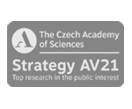Redox properties and reactivities of nonheme iron active sites
Grant Agency
Year from
2015
Year to
2017
Aim:
Iron as the most abundant redox-active metal in biology catalyzes many vital processes by performing difficult chemical reactions such as functionalization of aliphatic C-H bonds. In this proposal, we will focus on mononuclear nonheme iron (NHFe) enzymes and their model complexes. These species are important not only due to their functions in nature but also represent challenging systems for both experimental and theoretical chemistry. From the theoretical point of view, the requirement for an accurate description of their complex electronic structures often complicates predictions of their redox potentials and related reactivities. Nowadays, a theoretical protocol that would be of great interest for the appealing possibility to reliably predict redox potentials and reactivities of important but experimentally elusive NHFe species is not yet available. Besides developing such a protocol, the results are expected to contribute to understanding of the general factors that control selective mechanisms in the realm of powerful NHFe enzymes and related bio-inspired complexes.
Keywords in English:
nonheme iron species; redox properties and reactivities; computational electrochemistry; theoretical bioinorganic chemistry; metalloenzymatic catalysis; electronic structure calculations; multireference ab inito methods
RNDr. SRNEC Martin Ph.D.
Room
101
Department
Extension
2067
E-mail
martin.srnec jh-inst.cas.cz
jh-inst.cas.cz
 jh-inst.cas.cz
jh-inst.cas.cz















